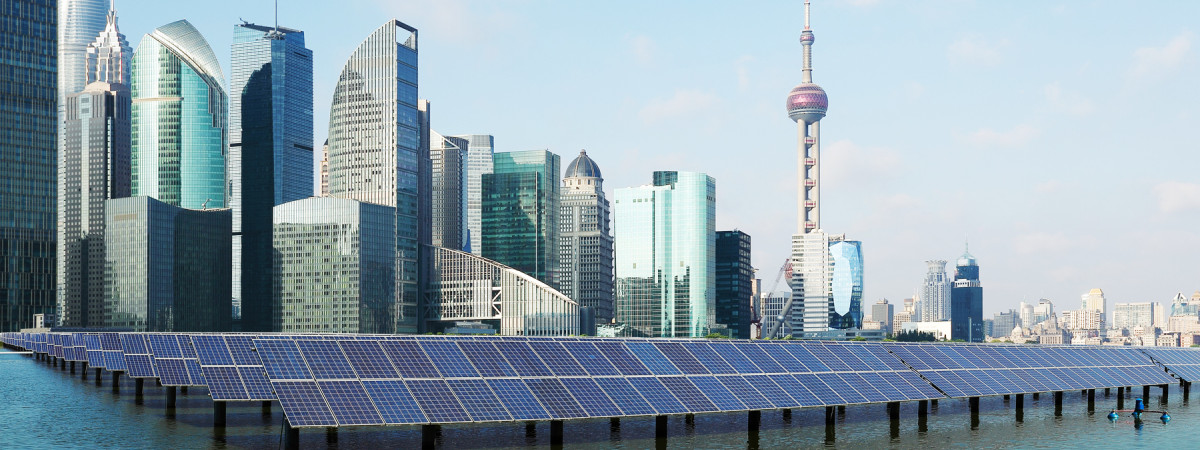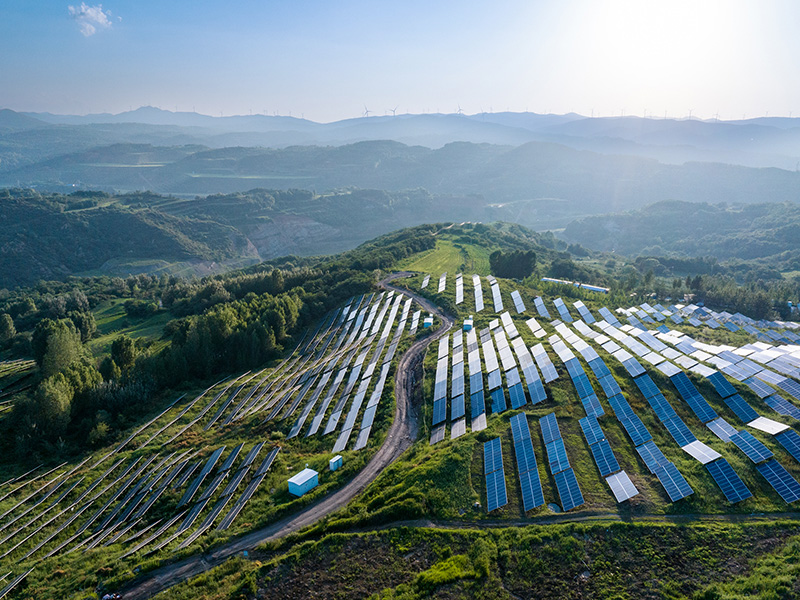
Photo by 123ArtistImages on iStock
Authors
-
Lin Wang
Former Director, Transformation, BSR
-
Melissa Do
Former Manager, Climate Change, BSR
-
Olivia Li
Former Manager, Transformation, BSR
-

Associate, Shared Services, BSR
Key Points
- Ongoing global focus on climate-related matters has persistently centered on China's changing dynamics, attracting widespread attention.
- China's economic rebound post-COVID signals a return to normalcy, with increasing indications of forthcoming actions to address emissions, both politically mandated and voluntarily adopted.
- Given China's prominent position as a major manufacturing hub, it is important for business to enhance their presence, contribute meaningfully, and cultivate collaborations in this significant market.
China’s national climate commitment aims to achieve carbon neutrality by 2060 and an emissions peak by 2030. The country has indicated a firm resolve to achieve these targets, while also emphasizing a trajectory that is “independent of external influences”. This blog explores the business implications of these climate policies, offering insights that are particularly relevant for global companies with substantial manufacturing operations in China and recommendations for how to leverage opportunities to address Scope 3 emissions in this dynamic landscape.
China's engagement in COP28 provided valuable insights into its evolving energy strategy, accompanied by potential 2025 targets. In addition, the Sunnylands Statement, jointly released by China and the U.S. signifies an elevated commitment to collaborative efforts in addressing the climate crisis. While abstaining from the Global Renewables and Energy Efficiency Pledge due to reservations, China’s stance reflects concerns over side agreements and meeting the outlined targets.
Introduced before COP28, the EU's Carbon Border Adjustment Mechanism (CBAM) faced some criticism, particularly from China, reflecting an acknowledgment of CBAM’s potential impact on trade dynamics and the imperative for enhanced climate emission reductions.
Propelled by climate policies, Chinese provinces, including Beijing, Shanghai, and Guangdong, are actively implementing comprehensive strategies for green, low-carbon development, emphasizing technological innovation, carbon neutrality, and the integration of sustainable practices across various industries.
Renewable energy is experiencing rapid growth in China. This upswing has a ripple effect on market performance, fostering growth in sectors such as electric vehicles (EVs), energy storage, and other emerging industries and technologies. However, despite the increasing share of renewables in the total electricity mix, coal usage is projected to rise, driven by China's post-COVID emphasis on economic development--a trajectory likely to continue until the nation reaches its emissions peak.
At the corporate level, businesses spanning manufacturing, construction, and logistics are embracing transformation by integrating solar panels, incorporating EVs, and adopting diverse clean energy practices. Notably, local enterprises, whether state-owned or private, are demonstrating proactive efforts to embrace emission reduction goals, potentially shaped by implicit government compliance expectations. This complex interplay of factors reflects China's evolving energy landscape, which is driven by priorities both at the national and local government level, followed by market changes including investment in the energy sector and carbon tax schemes.
Global companies operating in China, especially those with significant manufacturing, can take the following actions to meet their Scope 3 reduction targets in the context of evolving climate policies:
-
Craft a Comprehensive Climate Strategy that Aligns with Broader Business and Sourcing Strategies:
Global companies are increasingly setting clear climate strategies, particularly net-zero targets. However, a challenge lies in these strategies predominantly addressing Scope 1 and 2 emissions, leaving out Scope 3. To truly embrace a holistic approach encompassing Scope 3, it is crucial to intertwine climate strategies with broader business strategies. This integration ensures that actions to decarbonize supply chains align with business priorities and commitments, fostering collaboration with suppliers on climate performance improvements. Importantly, climate strategies should not burden suppliers but instead, serve as a collaborative framework for shared sustainability goals. -
Empower Supplier Engagement for Scope 3 Reductions:
In alignment with China's climate policies, many suppliers within the country express a willingness to embrace clean energy practices and invest in sustainable, long-term emission reduction solutions. However, some encounter challenges, ranging from where to start their sustainability journey, to calculating the return on investments. Many suppliers are eager to form partnerships with buyers, seeking collaborative opportunities for improvement and knowledge-sharing. Global companies and buyers can actively support these suppliers in their continuous efforts to collectively achieve Scope 3 emission reduction targets. Explore additional BSR resources on Buyer-Supplier Engagement, Supplier Engagement Guide, and a case study from Denmark for effective strategies.
-
Strengthen Partnerships with Leading Suppliers and Industry Initiatives for Collective Scope 3 Solutions:
Within the global supply chain, many Chinese suppliers excel in innovation, production, energy efficiency, and emissions reduction. Many have already established climate reduction targets and actively engage in industry-wide collaborations, such as the UNFCCC China group's initiative in the apparel industry. Global companies and buyers can leverage active suppliers in China, capitalizing on their commitment to ongoing improvement, robust investments, and dedication to low-carbon practices.
-
Integrate Just Transition Considerations:
While examining how to achieve specific Scope 3 targets is crucial, it is equally important to incorporate a holistic perspective on an accelerated and sustainable transition to a net-zero economy, considering the well-being of individuals, workers, and local communities. By integrating social considerations into climate goals, companies can contribute to a just and sustainable transition, ensuring a positive impact on both the environment and the communities in which they operate.
In navigating China's dynamic and evolving climate policy landscape, global companies often cite the challenges posed by uncertainty and frequent policy changes. However, amid these complexities, it is increasingly vital for companies to establish their own climate strategy and clear goals in alignment with the 1.5°C global ambition. This strategic clarity will enable them to adeptly navigate through China's climate policy shifts, whether gradual or abrupt. Recognizing China's significant role in raw material supply and production, and as a major consumer market, companies should leverage these vast opportunities for resources and partnerships.
For more guidance on navigating the evolving climate policy landscape, contact BSR’s climate and supply chain experts based in China.
BSR’s latest sustainability insights and events straight to your inbox.
Topics
Let’s talk about how BSR can help you to transform your business and achieve your sustainability goals.







